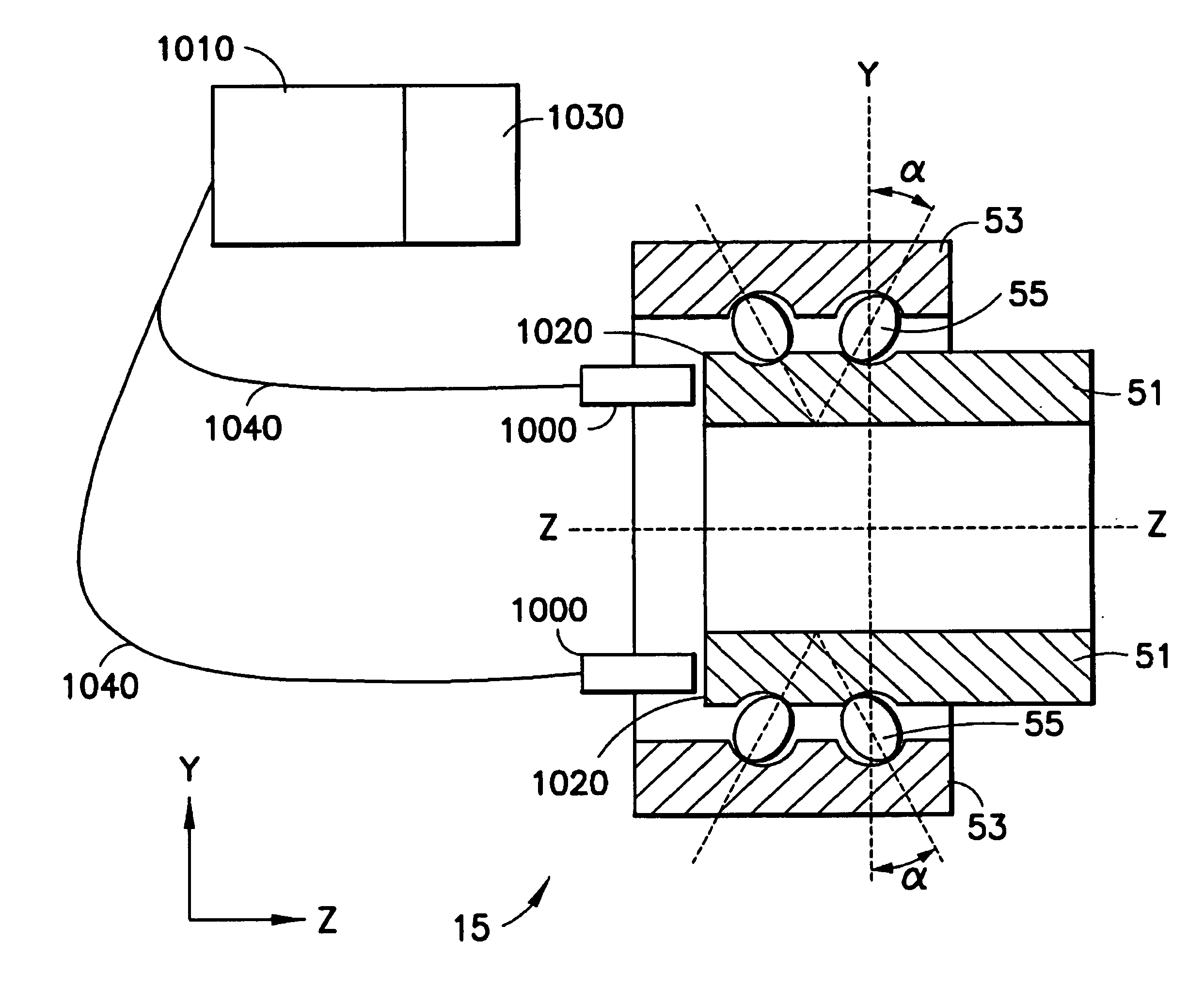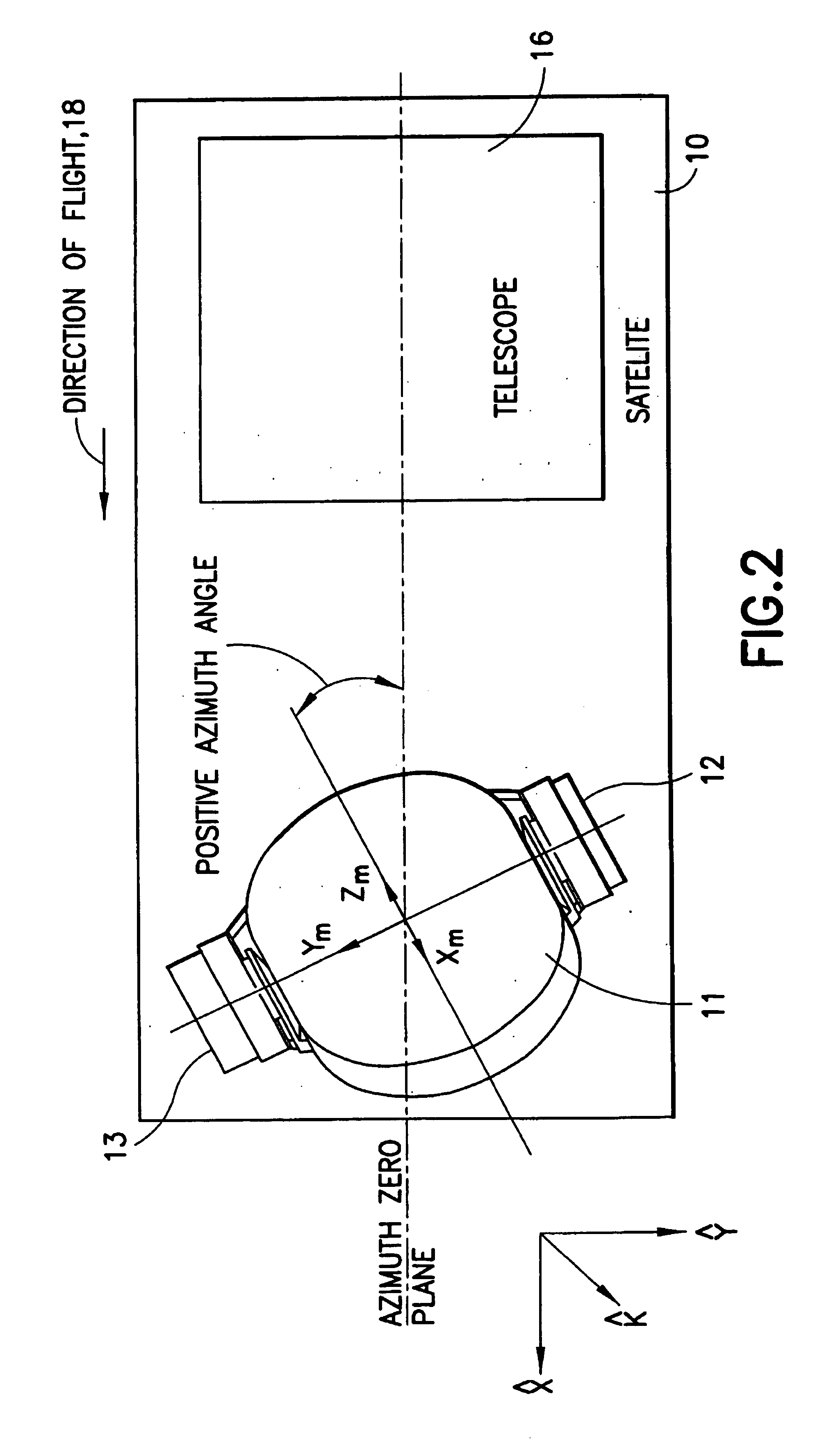System for measuring the effect of bearing errors in an active device
a technology of bearing errors and active devices, which is applied in the direction of speed measurement using gyroscopic effects, instruments, surveying and navigation, etc., can solve the problems of frequent limited operation of rotating components, limitations in moving components, and errors in actual pointing
- Summary
- Abstract
- Description
- Claims
- Application Information
AI Technical Summary
Benefits of technology
Problems solved by technology
Method used
Image
Examples
first embodiment
[0106]FIG. 10 shows the The probes 1000 are attached to the inside of the outer ring 53 of the azimuth bearing 15, and monitor the base of the inner ring 51. The probes 1000 are connected to appropriate signal processing equipment 1010 to provide the required data. The connection is preferably made by connection cables 1040. The signal processing equipment 1010 makes reference as required to external resources 1030. The external resources may contain, without limitation, information such as databases containing characterization data.
[0107]In this embodiment, the probes 1000 measure the distance from their respective mounting locations to the base 1020 of the inner ring. The measurements taken in this location include two components. The first component is the repeatable run-out derived from variation in the fabrication of the base 1020 of the inner ring. The second component is the tilt of the inner ring 51. The repeatable run-out can be removed by use of software using data from p...
second embodiment
[0108]A second embodiment is presented in FIG. 11, where the probes 1000 are outside of the bearing 15. In this embodiment, a specially constructed target of a circular flange 1110 has been added specifically for monitoring by the probes 1000.
third embodiment
[0109]In the third embodiment, shown in FIG. 12, the probes 1000 are attached to the base 30 to which the outer ring 53 is also mounted, or the probes 1000 are attached to the outer ring 53. The probes 1000 are directed to a bottom portion of the elevation arms 1210, which are attached to the inner ring 51.
[0110]The first embodiment provides advantages in that the proximity sensors 1000 are insulated from thermal effects by mechanical shielding, at least to some extent. The proximity sensors 1000 deployed in the second embodiment may also be at least partially insulated. It is considered that the second embodiment provides advantages over the first embodiment in that connections to the proximity sensors 1000 may be simpler than that of the first embodiment. The third (and preferred) embodiment provides advantages in that additional material is not required to present monitoring targets for the eddy current proximity sensors 1000, the connections are simplified, and the sensors 1000 ...
PUM
 Login to View More
Login to View More Abstract
Description
Claims
Application Information
 Login to View More
Login to View More - R&D
- Intellectual Property
- Life Sciences
- Materials
- Tech Scout
- Unparalleled Data Quality
- Higher Quality Content
- 60% Fewer Hallucinations
Browse by: Latest US Patents, China's latest patents, Technical Efficacy Thesaurus, Application Domain, Technology Topic, Popular Technical Reports.
© 2025 PatSnap. All rights reserved.Legal|Privacy policy|Modern Slavery Act Transparency Statement|Sitemap|About US| Contact US: help@patsnap.com



